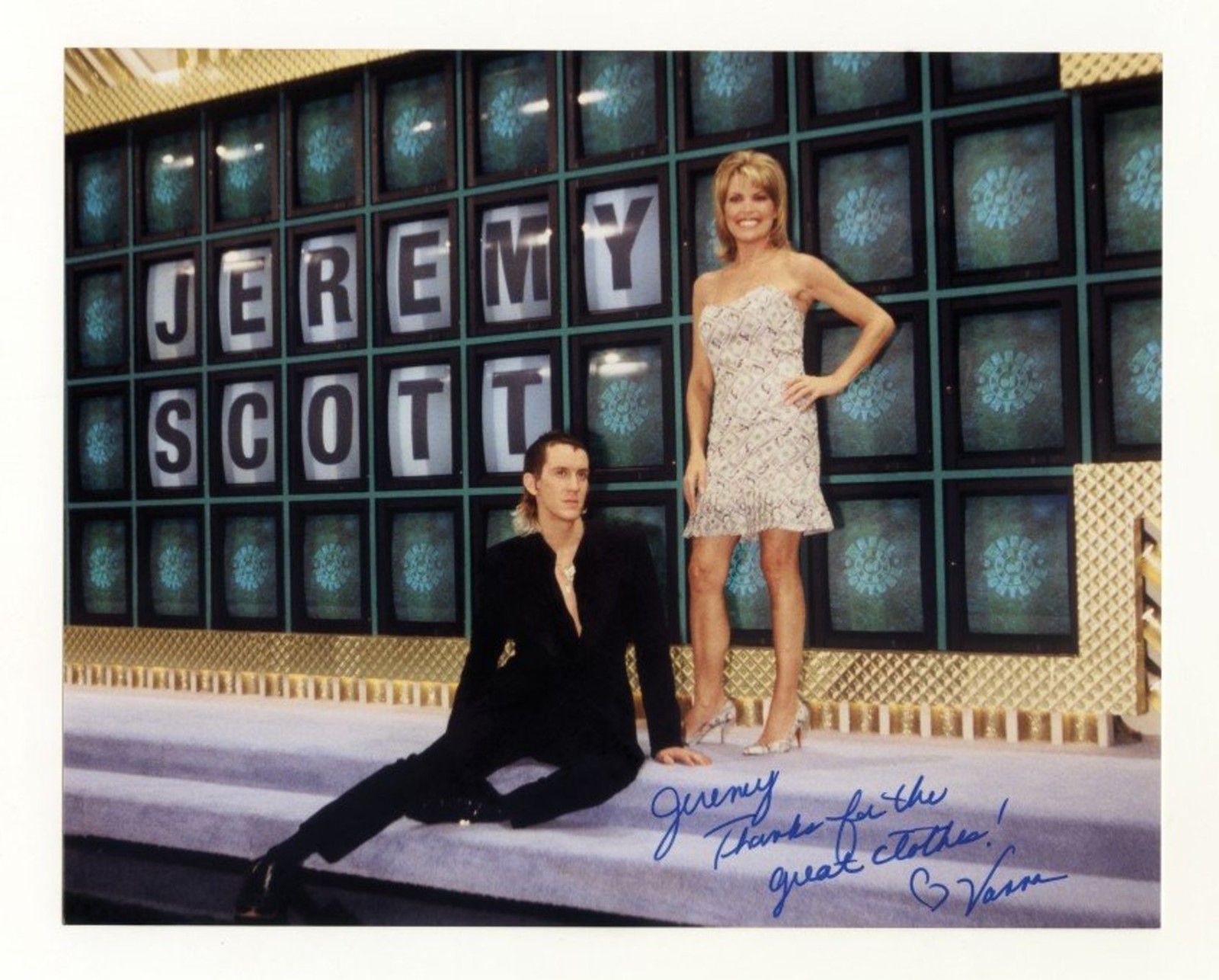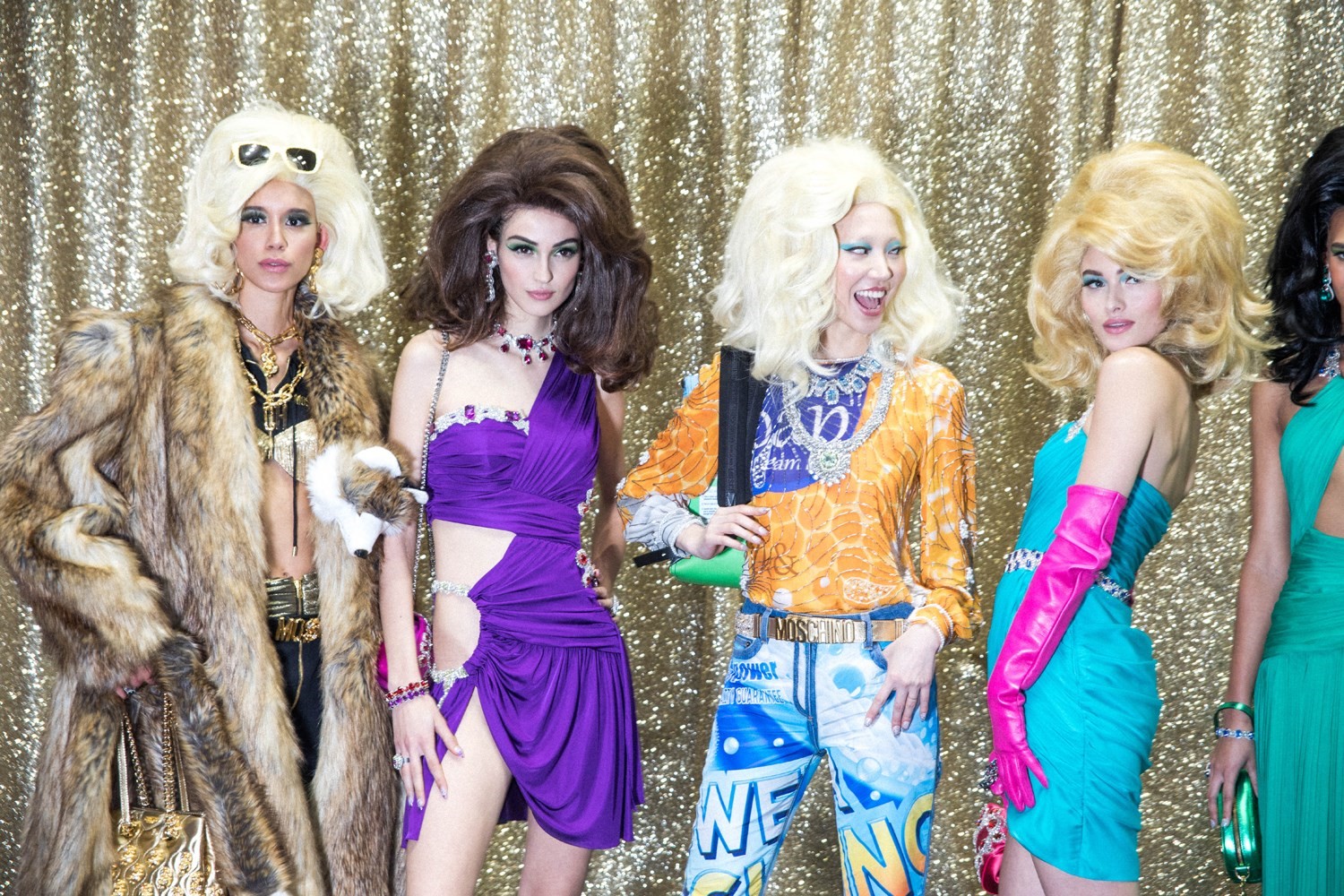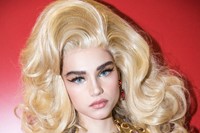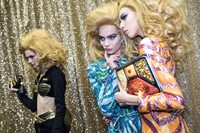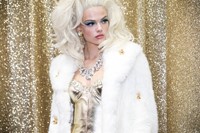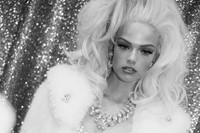In February 2001, Jeremy Scott took over the Cirque d’Hiver in Paris to stage a fashion version of American television game show The Price Is Right. It was a collection and a fashion performance he titled American Excess, which is exactly what it was – with models sporting Scott gowns as they stroked their hands languidly, refrigerators stacked with gold bullion, a blender crammed with dollar bills and a model brandishing the proverbial million-dollar cheque (it featured Scott’s signature). In a meta fashion moment, a clutch of the dresses from that collection – including one number in a jacquard of dollar bills bearing Scott’s face – wound up dressing Vanna White, hostess of Wheel Of Fortune since 1982, for a week in December 2001. Her pumped-up hair and slinky televisual wardrobe provided ample inspirational fodder for Scott in the first place. It was a match made in heaven.
It’s one of my favourite fashion shows ever – which I told Scott, apropos of nothing, in New York after his own Autumn/Winter 2019 show. “You are coming to Moschino, right?” He replied. “Because I think you’ll enjoy it.”
Television and fashion alike love a re-run – which is what Scott’s Autumn/Winter 2019 Moschino show was. The gameshow compere backcombing was in place, as were the dollar bills. “This time, I have the budget to do it right,” Scott commented backstage, as models scrambled to take their places. Out front, the curtain rose slowly and revealed models Vanna-vamping in front of, say, a giant one-armed bandit, a washer-dryer set, even a brand-new Ferrari, to Crystal Waters’ song Come On Down. Even the seating was stacked high, to imitate the ranks of gameshow audiences. You can’t “come on down” otherwise. Just like that first show, a worn-out audience of fashion hacks broke into laughter and cheers.

The clothes? Well, they underscored the ideas – game-show gowns patterned with dollar bills and the kind of consumer goods whose endorsement underwrite gameshows – who add glamour to, say, toothpaste or dish soap, the imaginary branding of which patterned evening dresses. A giant TV Dinner kimono was a literal definition of wearing your food. And there were lots of levels to this performance – the demise of television watching and the associated advertising revenue in the age of the internet; the ethics of rampant consumerism; the power of escapism. When Scott is at his best – this was him, at his very best – he can dig deep, while keeping a glamorous, sparkling superficiality. It’s an artful tightrope walk.
The entire thing was, of course, an exercise in camp both high and low, melded together, which is Scott’s skill. He has about 20 outfits going into the upcoming Metropolitan Museum show on the subject, including pieces from his original game-show show. Camp itself is multi-layered, laden with meaning – about the elevation of mass culture to cult status. It’s in everything Scott does. And besides, what could be more camp than a revival? Maybe only exercising in high-heels.
